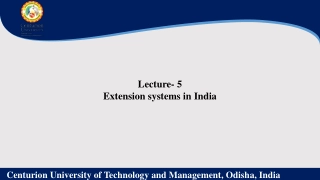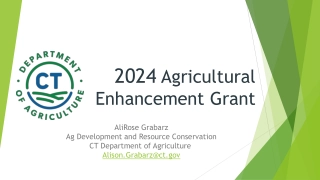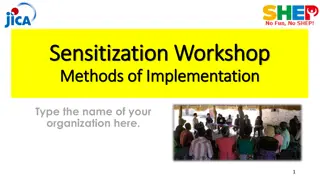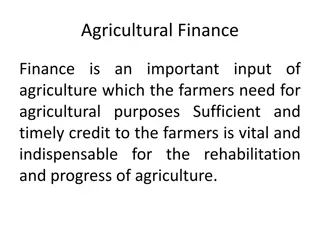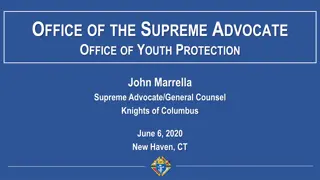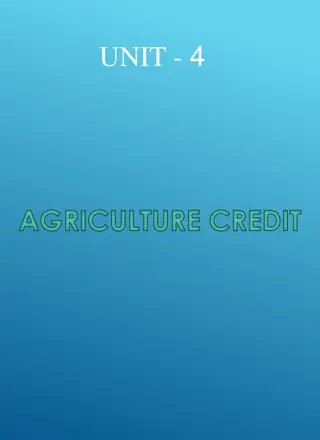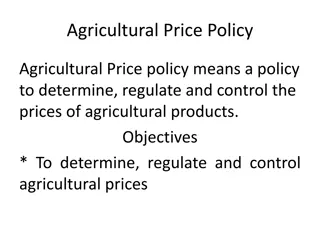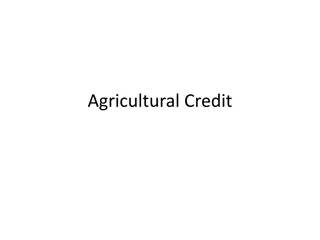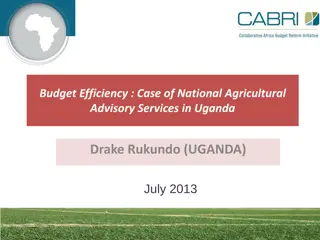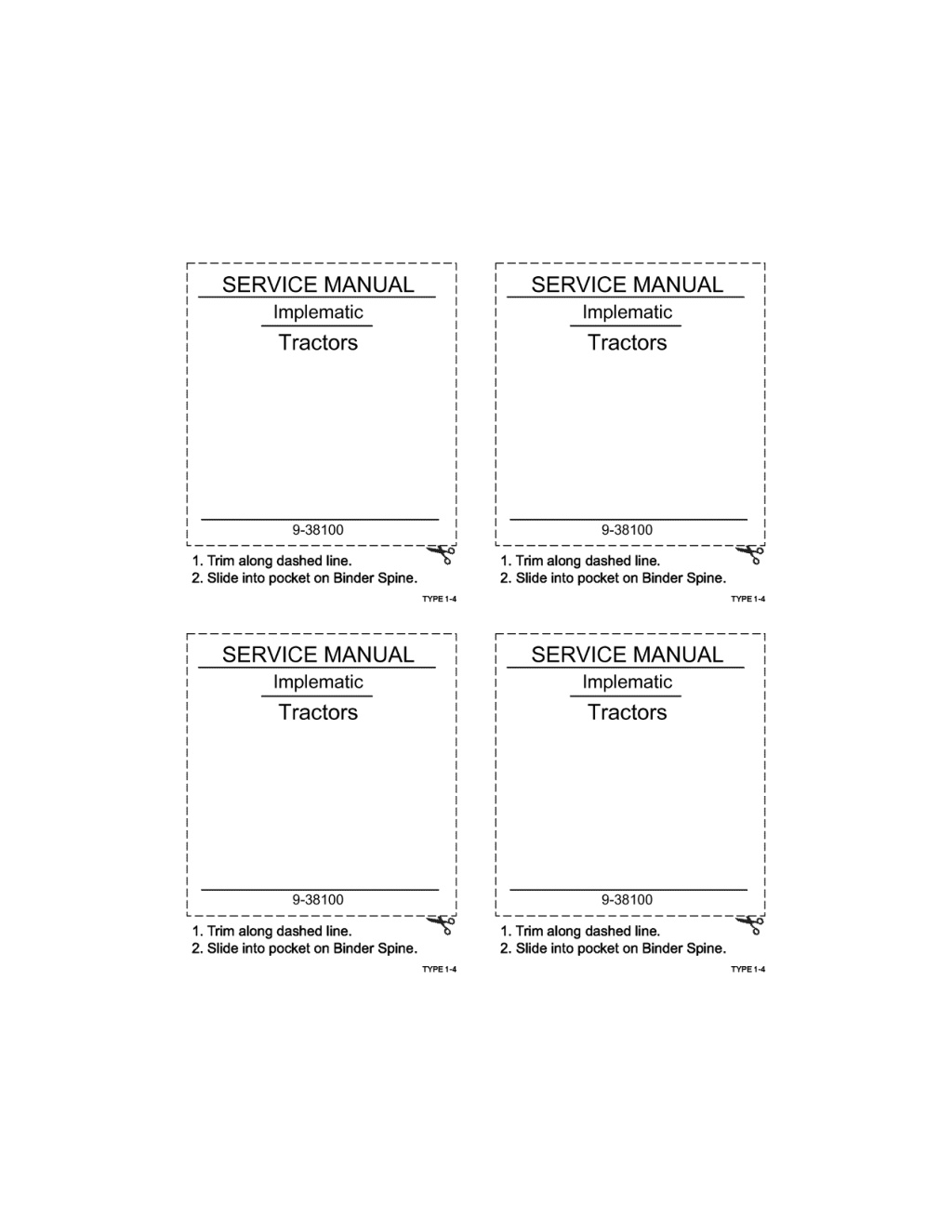
CASE IH 990 Agricultural Tractor Service Repair Manual Instant Download
Please open the website below to get the complete manualnn//
Download Presentation

Please find below an Image/Link to download the presentation.
The content on the website is provided AS IS for your information and personal use only. It may not be sold, licensed, or shared on other websites without obtaining consent from the author. Download presentation by click this link. If you encounter any issues during the download, it is possible that the publisher has removed the file from their server.
E N D
Presentation Transcript
r----------------------, : SERVICE MANUAL I I Implematic I : Tractors I I I I I I I I I I I I I I : 9-38100 L ; T r----------------------, : SERVICE MANUAL I I Implematic I : Tractors I I I I I I I I I I I I I I : 9-38100 L ; T r i ; ~ ~ ~ d ~ ~ d ~ ~ ; - - - - - - ~ : I I I : I I I I I I I I I I I I I I : : I I I : I I I I I I I I I I I I I I : r i; ~ ~ ~ d ~ ~ d ~ ~ ; - - - - - - ~ 2. Slide into pocket on Binder Spine. 2. Slide into pocket on Binder Spine. TYPE 1-4 TYPE 1-4 r--------- ----- --------, : SERVICE MANUAL I I Implematic I : Tractors I I I I I I I I I I I I I I I 9-38100 I L ; T r----------------- -----, : SERVICE MANUAL I I Implematic I : Tractors I I I I I I I I I I I I I I I 9-38100 I L ; T r i ; ~ ~ ~ d ~ ~ d ~ ~ ; - - - - - - ~ : I I I : I I I I I I I I I I I I I I I I : I I I : I I I I I I I I I I I I I I I I r i; ~ ~ ~ d ~ ~ d ~ ~ ; - - - - - - ~ 2. Slide into pocket on Binder Spine. 2. Slide into pocket on Binder Spine. TYPE 1-4 TYPE 1-4
Introduction The engine fitted to 990 Agricultural Tractors is designated A04/47 and is a four- cylinder unit of 31 in. bore and 41 in. stroke, fitted with wet cylinder sleeves. As the engine must have a flywheel suitable for the clutch (Livedrive or Non-Livedrive) the suffix A or B is included in the designation to indicate the type of flywheel fitted and therefore the tractor model on which the engine is used. The engine fitted to 990 Industrial Tractors is designated 104/47 and is basically identical to the A04/47 engine, the only difference being that the 104/47 engine is fitted with a flywheel suitable for the twin-plate clutch and has a splined coupling flange attached to the longer flywheel bolts. Engine Designation and Tractor Models Engine Series Tractor Model Tractor Number 440001 to 481999 482001 onwards {990 Implematic Livedrive 990 Selectamatic Livedrive A04/47A {99O Implematic Non-Livedrive 990 Selectamatic Non-Livedrive 440001 to 481999 482001 onwards A04/47B 104/47 990 Industrial Models 440001 onwards
FRONT AXLE AND STEERING Selectamatic Tractors REPAIR MANUAL PUBLICATION TP 619 .. DAVID BROWN TRACTORS LIMITED MELTHAM YORKSHIRE ENGLAND HD73AR September 1969
https://www.ebooklibonline.com Hello dear friend! Thank you very much for reading. Enter the link into your browser. The full manual is available for immediate download. https://www.ebooklibonline.com
I I : I ~ I ~ l ; U I ~ Page SECTION Front Axle and Steering Front Wheel Alignment 1 Front Hubs 1 Stub Axles 3 Front Axle 4 8 Steering Box Power-Assisted Steering Operation 15 Maintenance and Service 16 17 19 Fault Finding Repair Operations Hydrostatic Power Steering Operation 33 34 35 36 37 Operation of Servo Valve Maintenance and Service Fault Finding Repair Operations 40 Dimensional Data .. Summary of Design Changes 43
FRONT AXLE AND STEERING ' - - A ~ - - ~ - - - - - - - - - - - - ~ Figure 1. FRONT WHEEL ALIGNMENT B. Rear distance F. Locknut D. Track Rod A. E. Front distance Ball joint C. Track rod tube G. Clamp bolt extensions. Remove the front wheels. centre cover and split pins. Unscrew stub axle nuts-these are both right-hand thread-and pull the hubs off the stub axles. The bearings will be removed with the hub and it will be necessary to lever out the oil seal to r e m o v ~ the inner bearing. Oil Seals: As the presence of dirt or water in the front hub would cause rapid bearing failure a seal is fitted in the inner face of the hub. The main purpose of this seal is to prevent dirt reaching the bearing-not to prevent lubricant escaping from the hub - so it is essential that the seal is fitted with the lip towards the centre of the tractor. The seal therefore prevents dirt entering the hub but allows excess lubricant to escape. A discharge of lubricant past the seal is not. therefore. detrimental but desirable. as this ensures that the cavity between the seal and metal dirt excluder is .kept free of abrasive matter which would quickly damage the seal (Fig. 2). Front Wheel Alignment The front wheels should be set so that they have -n to i in. (1'6 to 3 2 mm) toe-in when in the straight-ahead position. (Fig. 1). This setting is determined by the length of the track rod and if the track rod is disturbed. or if incorrect wheel alignment is suspected. the setting should be checked by measuring the distance between the wheel rims at points level with the wheel centres and parallel to the centre-line of the front axle. The distance between the front of the rims should be -n to i in. (1 6 to 3 2 mm) less than the distance between the rear of the rims. and if incorrect may be adjusted by screwing a ball joint further in. or out. of the track rod. As both ball joints have right-hand threads releasing the locknuts and tuming the track-rod tube will not alter the length of the track-rod. To alter the track-rod length it is necessary to release a locknut. remove one of the track-rod clamp bolts and tum only half the track rod. so that only one ball joint is screwed further in. or out. as required. After resetting the track-rod length. replace the clamp bolt. tighten the locknut. then recheck the wheel alignment. As the track-setting holes in the track rod are drilled the same distance apart as the holes in the beam extension. wheel alignment is not altered when the wheel track is changed. If the wheel alignment is correct at one track setting it will remain correct at all track settings. When a tractor is fitted with front-wheel brakes. the brake back-plate prevents dirt reaching the seal. and the seal should therefore be fitted the opposite way round. i.e . the lip facing away from the centre of the tractor so that lubricant cannot escape from the hub and contaminate the brake linings. Because the seal retains lubricant in the hub it is important that when front-wheel brakes are fitted the hubs are lubricated very sparingly. otherwise pressure build- . up in the hub. due to an excessive amount of lubri- cant. will force the seal lip tightly against the collar and cause ultimate seal failure (Fig. 3). Front Hubs Hub Removal: Jack up the front of the tractor and place suitable supports under the axle beam Hub Bearings: After removing both bearing inner tracks. clean out the inside of the hub and examine the bearings. If the surface of the rollers or Page T
Figure 2. FRONT HUB AND STUB AXLE A. Front hub B. Hub cover c. Hub bearing D. Oil seal E. Stub axle F. Thrust washer G. Lower bush H. Upper bush J. Steering lever K. Beam extension Figure 3. FRONT HUB WITH FRONT BRAKES A. Front hub B. Brake drum c. Hub bearing D. Oil seal E. Stub axle F. Thrust bearing G. Lower bush H. Upper bush J. Steering lever K. Beam extension L Brake backplate Page 2
bearing tracks is pitted or worn the bearings should be renewed. It is not necessary to renew both bearings if one is serviceable. but it is essential that the complete bearing is renewed. The outer track should therefore be driven out of the hub and the track supplied with the new bearing pressed into position - thinnest edge of track towards the out- side of hub - until it is firmly in the hub recess. Refitting the Hubs: Replace the inner bearing and press a new seal into position. using a flat plate so that the seal is pressed in evenly all round. Position the seal so that the lip is facing outwards (unless front brakes are fitted. when it should face inwards). Pack the inside of the hub with clean grease and replace it in position on the stub axle. taking care that the oil seal lip slides on to the seal collar. and replace the outer bearing. Fit the large flat washer and nut. Rotate the hub whilst firmly tightening the nut. so that the bearings are fully seated. then slacken the nut back one flat and fit a split pin. Replace the cover and pump grease through the nipple until the hub is filled and grease begins to escape past the seal. ~ i n U N C X ~ i n (22 2mm) Figure 4. DETAILS OF BUSH MANDRELS The following mandrels will be found useful for removing and replacing steering bushes: A Mandrel No. 1 1 120 in. (28 45 mm) Mandrel No.2 1 370 in. (34'80 mm) Mandrel No.3 1 495 in. (37'97 mm) Mandrel No. 4 1 620 in. (41 15 mm) Mandrel No.5 1 870 in. (47 50 mm) B 0 995 in. (25'27 mm) 1 245 in. (31'62 mm) 1 370 in. (34'80 mm) Stub Axles The stub axles pivot in steel-backed bushes in the beam extensions and are retained in position by the steering lever. Steering Lever Removal: Raise the front end of tractor and place supports under the front axle beam extensions. Remove the wheels and the steering-arm bolts then temporarily refit the steering- arm bolts without washers. Screw the bolts finger- tight then unscrew two full turns only and. with a solid support under the beam extension. strike the bolt a sharp blow squarely on the head. This will release the steering lever from the taper on the stub axle and allow the stub axle to be removed when the bolt is unscrewed. Stub Axle Bushes: Two stub axle bushes are pressed into each beam extension and these should be renewed if worn. Drive the bushes out with a suitable drift taking care not to damage the bush locations. When fitting new bushes. clean the components and remove any burrs from the axle bores. Press the new bushes into position using a mandrel made to the dimensions shown in Fig. 4. If a mandrel is used the bushes will not be damaged during fitting. and reaming will not be necessary. 1 495 in. (37 97 mm) 1 745 in. (44 22 mm) Thrust Washers and Seals: Model 1200 Tractors, and 990 and 880 Tractors with heavy duty front axles. are fitted with roller thrust bearings. These bearings are fitted with a steel washer at each side and. as two different types of bearings are supplied. ensure that the correct washers are used (Fig.6). The bronze thrust washers fitted on other tractors do not require steel backing washers. Always fit new thrust washers and sealing rings when fitting new bushes. Steering Stops: Front wheel movement. is limited by means of the stops on the beam extensions. If the stops become worn. remove the extension and build the stops up to the original shape with welding (Fig. 7). If the steering-box reaches the end of its travel before the stub axles touch the stops a heavy impact against the front wheels may damage the steering box casting. Refitting the Stub Axles: Clean the stub axle and fit a new sealing ring. Smear the thrust Two flats Figure 5. HOLDER FOR BUSH MANDREL A. Mild Steel bar 1 in. (25 mm) dia. B. 12 in. (30'5 mm) C. I UNC x i in. (19 mm) deep D. Stud. I UNC x 1 i in. (38 mm) A P ~ g e 3
waShers with grease then fit on the stub axle. Smear 1M ,inside of the axle bushes with oil and fit a new "58Bling ring; fit the stub axle into the beam and 1"8Place the steering lever. Ensure that the lever is fitted on the correct splines and the special thick washer is fitted on the bolt, then tighten the bolt to 120 lb ft (16 6 kg metres). Lubricate with SAE 140 -Oil bV applying a grease gun to the nipple on the :front of the axle extension. Seal both pipe connections to prevent the entry of dirt. Raise the front end of tractor and remove front wheels. Disconnect drag link from the left-hand steering arm and tum the drag link rearwards out of the way. If the tractor is fitted with power-assisted steering, disconnect the ram from steering arm and tie the ram to the tractor so that the pipe connections are not strained. Lower the tractor on to supports placed under the front main frame. Do not place supports under the engine sump as this is a steel pressing. Using a crane to support the weight of the axle and front extension, remove the bolts and nuts attaching front extension to main frame then draw the extension forward clear of the main frame. Front Extension Removal - Tractors: Remove bonnet and drain cooling system. Remove battery, air cleaner and support brackets. Disconnect the hoses and remove radiator. Raise front end of tractor and remove front wheels. Disconnect drag link from the left-hand steering arm and tum the drag link rearwards out of the way. If the tractor is fitted with power-assisted steering, disconnect the ram from the steering arm then tie the ram to tractor, so that the pipe con- nections are not strained. Lower tractor on to supports placed under the front main frame. Do not 990 and 880 Figure 6. ROLLER THRUST BEARINGS A. Bearing 620180 (INA AXK4565)with B. Thrust washers 626692, 0 39 in. (1 mm) thick C. Bearing 620184 (Torrington NTA284) with D. Thrust washers 626859, 0 060 in. (1 5 mm) thick front Axle Fabricated axles are standard fitting on all models, but heavy duty forged axles are an optional fitting on 990 and 880 Tractors. On 1200, 990 and 880 Tractors the front axle trunnion pin is fitted from 1M rear end of the main frame extension and to remove the front axle it is necessary to remove the extension from the main frame in order to extract the trunnion pin (Fig. 9). On 780 and 770 Tractors, the front axle trunnion pin is fitted from the front .of the main frame and the front axle can readily be removed. Front Extension Removal -1200 Tractors: Drain the cooling system and remove the bonnet top. Remove the battery and bonnet front. Remove air cleaner with supports, disconnect hoses and lift off 1iIdiator. Drain the transmission oil-if this is to be fe-Used ensure that it is drained into a clean con- tainer. Remove the bolts attaching the pump drive- shaft coupling to the crankshaft pulley and slide the coupling on the shaft. Disconnect the pump pipe connections and remove the bolts from the pump support bracket so that the pump can be removed complete with bracket and driveshaft. Remove the .pump inlet pipe and disconnect the pressure pipe at the connection underneath the clutch housing. Figure 7. STEERING STOPS A. Beam extension stop B. Stub axle stop place the supports under the engine sump as this is a steel pressing. Using a crane to support the weight of the axle and front extension, remove the bolts and nuts attaching front extension to main frame then draw the extension forward clear of the main frame. Trunnion Pin Removal-1200, 990 and 880 Tractors: Cut the locking wire and remove the bolt attaching trunnion pin to axle beam. The nut Page 4
Figure 8. FRONT AXLE AND STEERING MECHANISM B. Trunnion pin F. Steering lever J. Drop arm D. Stub axle H. Drag link C. Beam extension G. Track-rod tube K. Steering box A. Front axle beam E. Front hub Figure 9. TRUNNION PIN MOUNTING -1200. 990 and 880 (later type) A. Trunnion pin B. Bush E. Thrust washer c. '0' ring F. Retaining bolt D. Axle beam Page 5
Drill &. Tap Y2 in. Whitworth 3 ~ i n Deep. Plain Washer Welded as Shown Figure 10. TRUNNION PIN REMOVAL TOOL A. Slide hammer (Service Tool 4235A) D. i in. (19'9 mm) G {1i in. (31'7 mm) -1200. 990 and 880 . 1 in. (25'4 mm) - B. Adaptor E. 1iin.(34 9mm) H {i UNC thread -1200. 990 and 880 . i- UNC thread -780 and 770 C. 2 in. (50'8 mm) F. i-in. (12'7 mm) 780 and 770 is in the form of a threaded bush which is knurled on :the outside so that it is prevented from turning by the axle beam. but is pulled through the beam and tightened against the pin: the conical end of the sleeve tightening against the hole in the trunnion .pin to lock the pin and beam together (Fig. 9). Trunnion Pin Bushes: The bushes may be driven out with a suitable sized mandrel. but where the bushes are in a blind hole they must be collapsed by driving a small round-nose chisel down the side of the split and then extracted with a pair of pliers (Fig. 11). Fitting New Bushes: If the bores in the extension are free from burrs and scratches, the out- side of bushes smeared with thin oil, and a correct diameter mandrel (Fig. 4) used to press the bushes into position, it will not be necessary to ream the bushes after fitting. On 1200, 990 and 880 Tractors position the bushes so that the splits will be towards the bottom, or no load pOSition, when installed. then press the bushes in as shown in Fig. 9. Turn the extension over and lay it on the floor. 'Extract the trunnion pin. using a slide hammer and adaptor (Fig. 10) screwed into the i UNC tapped hole in the trunnion pin. Use the crane to support weight of axle when withdrawing the trunnion pin then Jift the axle clear of the extension. Trunnion Pin Removal- 780 and 770 Tractors: Remove bonnet. disconnect steering drag link and turn rearwards out of the way. If power- assisted steering is fitted disconnect ram from the left-hand steering lever then tie the ram to tractor. so that the pipe connections are not strained. Using a jack under front axle. raise the tractor and remove front wheels. Place suitable supports under main frame. positioned as far forward as :possible but clear of the front axle. Remove trunnion- !pin locking bolt from axle beam and. using a sharp 'punch. lever the welch plug out of front extension. 'With the weight of tractor resting on the supports and the jack supporting the weight of the axle only, :pull the trunnion pin out of frame with a slide hammer and adaptor (Fig. 7) screwed into the i UNC tapped hole in the trunnion pin. When the 1rUnnion pin has been extracted, lower the axle -and draw it forward clear of tractor. Figure 11. REMOVING TRUNNION PIN 8USH FROM BLIND HOLE Page 6
o c F B A E G Figure 12. TRUNNION PIN MOUNTING - B. Rear bush F. Thrust sleeve 780-770 A. Trunnion pin E. Centre beam C. Front bush G. Retaining bolt D. Welch plug On 780 and 770 Tractors the bushes are of different lengths - shortest at the front - be positioned so that the hole through the bush is opposite the grease nipple (Fig. 12). Front Axle Trunnion Tube: The fabricated centre beam of the standard axle is a welded assembly and individual parts are not supplied separately. On early 990 and 880 Tractors thrust sleeves were fitted between the trunnion pin and axle tube but on later tractors the diameter of the tube bore was reduced and the pin fitted directly into the tube, with thrust washers in place of sleeves (Fig. 13). All 780 and 770 Tractors are fitted with thrust sleeves on the trunnion pin but early 770 Tractors were fitted with i in. (19'05 mm) sleeves and when fitting new sleeves to these tractors the depth of the axle counter bore should be increased so that the 1! in. (38'09 mm) long sleeves can be fitted. Refitting Front Axle: Refit the axle in the reverse order of removal, noting the following points. Renew the sealing rings and thrust washers. Different thicknesses of thrust washers are available for 990 and 880 Tractors with heavy duty axles, and the washers used should be so thick that it is necessary to lever the two beams together in order to fit the front washer in place (Fig. 14) giving a pre-load of 0 060 in (1'52 mm). Smear the inside of the bushes with grease and carefully align the axle with the bush bores, so that the trunnion pin can be tapped into position without damaging the bushes. Position the trunnion pin so that the bolt-hole is in line with the bolt-hole through the beam. On and must Figure 13. TRUNNION PIN MOUNTING - B. Bush E. Thrust sleeve 990-880 (Early Type) C. '0' ring F. Retaining bolt A. Trunnion pin D. Axle beam Page 7
Figure 14. HEAVY DUTY FRONT A B. Beam extension F. Stub axle X L E - 9 9 0 - 8 8 ~ c. Trunnion pin G. Track-rod tube Centre beam Frame extension A. E. D. Bush 1200, 990 and 880 Tractors firmly tighten this bolt then lock with wire, but on 780 and 770 Tractors the bolt should not be very tight as this may distort the beam tube: screw the first nut finger-tight then hold it with a spanner and firmly tighten the locknut against it. cover and lubricated by an oil bath formed in the cover casting. Drop Arm Removal: On 1200, 780 and 770 Tractors the drop arm fits on taper splines on the cross shaft and is retained in position by a bolt in the centre of the shaft. As the arm is very tight on the shaft it is essential to remove the arm with an extractor. Remove the bolt and large flat washer then refit the bolt without washer: tighten the bolt then unscrew two full turns. Use a two-jaw extractor to grip the arm and tighten the jacking screw against the bolt head until the arm is pulled free. On 990 and 880 Tractors the drop arm is fitted on parallel splines and retained by a clamp bolt. To remove the arm it is therefore only necessary to remove the clamp bolt then slide the arm off the shaft serrations. Before removing a drop arm always note the marking (Fig. 15) so that the arm can be refitted in the same position. Steering Box Removal: Caution - commence steering box removal by removing the four bolts from the base of the steering column and turning the steering wheel: this will turn the screw out of the nut and allow the steel balls to drop into the oil bath. Wipe the main frame and extension faces clean before refitting and tighten the bolts to 75 Ib ft (10 5 kg metres) on 1200 Tractors, or 50 Ib ft (6 9 kg metres) on 990 and 880 Tractors. When reassembling the pipework on the 1200 tractor, new '0' rings must be used and if necessary renew the inlet hoses. Priming Tractors: When re-assembly is complete and the transmission refilled with clean oil, slacken the pump pressure pipe union - this is under the right-hand side of the clutch housing - oil to leak out of the union for two or three seconds then stop the engine and fully tighten the union. the Hydraulic Pump-1200 and start engine. Allow Do not Steering Box A recirculating ball-type steering box is fitted to all models. The box case is bolted to the gearbox Page 8
1200 Tractors: Remove bonnet top and drain the oil from steering box: drain plug on left-hand side of gearbox cover. Remove the instrument panel complete with fuel tank. 990 Tractors: Disconnect the throttle control and remove the hand throttle lever. 990 and 880 Tractors: Remove bonnet and remove the two rear bolts attaching fuel tank support brackets to clutch housing. Raise the instrument panel - allowing tank to pivot on the front bolts then temporarily refit the rear bolts under the brackets- to hold the rear of the tank clear of the steering-box bolts. Disconnect drag link from drop arm and remove the bolts attaching steering box to gearbox cover. Remove steering box, complete with column and steering wheel, taking care of the two ring dowels fitted between the box and cover. Removing the Steering Column: Lay the box on bench and remove the four bolts from the ball pegs. Remove ball pegs, taking care of the shims, then remove the four bolts from steering column flange. Remove column assembly from the box and secure the nut to the screw with adhesive tape - to prevent the nut being turned to the end of the screw and releasing the steel balls (Fig. 16). Removing the Drop Arm Shaft: On 1200 Tractors the drop arm must be removed and also the cover and thrust plates. Remove the two clamp bolts from shaft fork then tap the drop arm end of shaft with a soft-faced hammer. Take care not to damage the end of the shaft and turn rocker arm frequently so that the end bush will be pushed evenly out of the B Figure 15. DROP ARM AND CROSS SHAFT MARKING A. Drop Arm B. Cross shaft Figure 16. STEERING BOX - 990-880 B. Outer bush F. Nut A. Cross shaft E. Ball peg C. G. Centre bush Shaft D. Rocker arm H. Column Page 9
Figure 17. STEERING BOX-1200 B. Roller bearing F. Rocker arm J. Shaft A. Cross shaft E. Shims C. Bearing bush G. Ball peg K. Column D. Thrust plate H. Nut Figure 18. SERVICE TOOL 901724 A. Mandrel B. Horseshoe Page 10
Figure 19. PRESSING OUTER BUSH THROUGH CENTRE LOCATION A. Service tool 901724 B. Outer bush C. Steering box A casting by the rocker-arm key. Do not attempt to remove the shaft by using a drift against the thrust plate end of the shaft: the rocker arm key will not pass through the drop-arm side of the box casting (Fig.17). the mandrel shown in Fig. 22 to fit a new needle bearing. Fit the bearing on to the mandrel so that the end of the bearing case which is stamped with the maker'S number is against the mandrel shoulder, then press - do not hammer - position. On all tractors except 1200 use Service Tool 901724 to press the bushes into position, ensuring that the holes through the bushes are opposite the grease nipple holes in the case. the bearing into On 990, 880, 780 and 770 Tractors the drop-arm shaft is retained in position by a large split pin through the rocker arm. To remove the shaft it is therefore only necessary to lever out the welch plug with a sharp punch, remove the rocker arm pin and then tap the shaft out, from the welch plug side, with a hammer and drift. The shaft can therefore be removed with the drop arm still attached. Drop-Arm Shaft Bearings: On 1200 Tractors a needle roller bearing is fitted inside the drop-arm end of the case and this may be levered out with the oil seal. As the bearing will be damaged during removal, do not remove the bearing unless it is to be renewed. On 990 and 880 Tractors three bushes are fitted in the box case and these can be removed with Service Tool 901724 (Fig. 18). Slide the special mandrel into the case and fit the horseshoe, recess towards large end of mandrel. Press the two inner bushes out then remove the horseshoe and withdraw the mandrel. Replace the horseshoe on the mandrel then press the outer bush through the centre bush location so that it will fall out when the mandrel is withdrawn (Fig. 19). Figure 20. DIMENSIONS OF COLLAR FOR REMOVING INNER BUSH A. 1 375 in. (3 49 mm) C. 1 25 in. (3 17 mm) E. i in. (3 17 mm) If Service Tool 901724 is not available the centre bush can be removed by making a collar to the dimensions shown in Fig. 20 and using this collar on mandrel No.1. B. 1'0 in. (25 4 mm) D. i in. (6 35 mm) On 780 and 770 Tractors there are only two bushes in the box case and these should be removed by pressing both bushes inwards. Service Tool 901724 can be used. Use the large end of the mandrel for the drop-arm side bush and the small end for the other side (Fig. 21). Cross Shaft Replacement: Renew the cross shaft if it is wom or twisted: a twisted shaft will allow the rocker arm to foul the case and may cause damage. Smear the inside of the bearings with grease, wipe the shaft clean and replace in the reverse direction of removal. On 1200 Tractors fit the shaft key and place the rocker arm inside the case - clamp bolts can be fitted after the shaft has been replaced. Tighten the clamp bolts to 30 Ib ft (14'15 kg metres) then fit an '0' ring into the end of the shaft and replace the bush, thrust washer, shims and cover. Check that sufficient shims have been fitted t=itting New Drop-Arm Shaft Bearings: Fit new bushes in the reverse order of removal. Ensure that the case bores are free from burrs and scratches, smear the outside of the bush with oil and use a correct diameter mandrel, so that it will not be necessary to ream the bushes after fitting. positioned so that the On 1200 Tractors use the mandrel shown in Fig. 4 to press the centre bush into the case and use Page 71
Figure 21. STEERING BOX - 780-770 D. Ball peg A. Cross shaft E. Nut B. Bush F. Shaft C. Rocker arm G. Column to position the fork centrally under the column aperture then fit the cover bolts and tighten to 20 Ib ft (2 76 kg metres). On all tractors except 1200, place the rocker arm in the case - positioned with the split-pin hole on the opposite side of the case to the drop arm. If the drop arm is on the shaft ensure that the rubber shaft seals are in position then align the split-pin holes and push the shaft into the rocker arm and fit the split pin. Fit a new welch plug and apply a few shots of lubricant through the grease nipples. Dismantling the Steering Column: First remove the steering wheel; this is fitted on a taper and may be drawn off after removing the domed nut and washer. Do not attempt to remove the wheel with a hammer as this will cause damage: use a three-jaw extractor which fits under the wheel boss. Remove the wheel key from the shaft and unscrew the locknut. Remove the adjustable bearing cone then invert the column over a suitable container to catch the steel balls, and withdraw the screwed shaft out of the column (Fig. 23) .. Figure 22. TOOL FOR FITTING NEEDLE ROLLER BEARING -1200 TRACTORS A. 1 45 in. (36 83 mm) C. 21 in. (54'0 mm) E. -h In. (7 94 mm) B. 1 87 in. (47'50 mm) D. 11 in. (3 17 mm) F. i in. (12'7 mm) Page 12
Figure 23. STEERING COLUMN UPPER BEARING A. Column B. Shaft C. Oil baffle D. Spherical seat E. Lower bearing cone F. Steel balls G. Adjustable bearing cone H. Locknut Caution: Do not allow the nut to be screwed to the end of the shaft thread as this will release the steel balls. Remove the two bolts attaching guide tube to nut then unscrew the nut from shaft, catching the steel balls as they are released. Assembling the Steering Column: Fit the rubber baffle, spherical seating and lower bearing cone in position on the shaft. Slide the shaft into the column and fit 12 steel balls. Smear the balls with grease so that they will remain in position in the column groove then fit the adjustable bearing cone to hold the balls in position. Fitting the Column on the Steering Box: Insert shaft into the box and position the column nut so that the transfer tube is on the opposite side to the drop-arm shaft. Set the column in the correct position - tank mounting bracket on 1200 Tractor towards front and throttle lever bracket on other tractors towards drop-arm side - bolts and tighten to 50 Ib ft (6'9 kg metres). fit the four flange Assemble the steering nut. Smear the balls with grease then fit them into the groove. Partly screw the shaft into the nut and continue fitting balls until the nut groove is completely full. Screw the nut on to the shaft, fit the remaining balls into the transfer tube and fit the transfer tube on to the nut. Setting the Ball Pegs: Align the steering nut and rocker arm peg locations. Fit one peg with the original thickness of shims and fully tighten the screws. Fit the other peg without shims and tighten the screws until the peg just commences to hold the Page 13
is fitted to lock the bearing and nut on early tractors, but on later tractors a special locknut, Part No. 924967, is fitted. This locknut has a recess on one side, which must be fitted against the bearing cone, and does not require a tabwasher. Replace the plastic dirt excluder, fit the shaft key and replace the steering wheel, flat washer and nut. Do not overtighten the wheel nut as this will make subsequent removal difficult. A tightening torque of 20 Ib ft (2 76 kg metres) is sufficient. Replacing the Steering Box: Clean the gearbox cover face and on all tractors except 1200 top up the oil bath so that the oil level is not more than 1 in. (2 5 cm) below the cover face. On 1200 Tractors the oil bath must be filled after the steering box has been bolted in position. On 990 and 880 Tractors fit the two outer front flange bolts into the steering box before placing it in position. Fit a new gasket and tighten the box bolts to 30 Ib ft (4 15 kg metres). Lubricate the cross shaft and column bearings through the grease nipples. Refitting the Drop Arm: Check that the seals are in position on the shaft then fit the drop arm so that the shaft and arm marks line up as shown in Fig. 15. Replace the retaining bolt and tighten to 1200 -120 Ib ft (16 6 kg metres) 990 and 880 - 30 Ib ft (4 15 kg metres) 780 and 770 - 75 Ib ft (10 5 kg metres) Drag Link Length: To obtain full steering lock in each direction and at all track settings the drag link should be set so that the distance between the centre of each ball joint is as follows: 1200-54 in. (137 16 cm). Tractors 700001 to 703529 1200 - 52! in. (133 35 cm). Tractor 703530 onward - Feeler gauge Figure 24. SETTING THE BALL PEGS nut. Measure the distance between the peg flange and rocker arm face with a feeler gauge. Subtract 0 002 in. (0 05 mm) from the reading obtained and select shims to make up this thickness (Fig. 24). Example: If feeler gauge reading is 0 018 in. then the thickness of shims required is 0 018 minus 0 002: equals 0 016 in. This will give the required peg setting of 0 001 - 0 003 in. (0 02 - 0 08 mm) pre-load. Remove the ball peg and fit shims of the required thickness. Fully tighten all screws then check that the nut is in the centre of the fork; if not, transfer shims from one side to the other. When the nut is central, finnly tighten the four screws then lock in position, with the tabwasher or centre punching according to the type being serviced. Steering Column Bearing Adjustment: Screw the bearing cone down until all play is removed but the bearing is not preloaded, then unscrew the bearing cone ith. tum to give 0 to 0 003 in (O to 0 076 mm) end float with the shaft central in tube. Hold the cone bearing in this position with a 1;' in. AF spanner and tighten the locknut to 120 Ib ft (16 6 kg metres). A tabwasher ~ ~ g } 4 6 , . \ in. (118 27 cm) ~ ~ g } 4 4 n in. (112 87 cm). Page 14
POWER-ASSISTED STEERING Figure 25. UNITS OF POWER-ASSISTED STEERING B. Pump E. Steering arm Reservoir C. Hydraulic ram F. Anchor bracket A. D. Drag link Operation of the ram is maintained within the limits of the wheel travel so long as the steering wheel is turned enough to keep the spool displaced from its central position. The Hydrosteer power-assisted steering system consists of an oil reservoir, engine-driven pump and hydraulic ram. The steering column and box are the same as used on the manual steering system, but the drag link is connected to the manual ball pin on the hydraulic ram instead of being attached directly to the left-hand steering lever. When the steering wheel remains stationary the spring on the valve spool holds the spool in the central position. Oil then flows past the spool lands and returns to the reservoir. Since only a small amount of back pressure then exists in the system the pump delivers oil at low pressure to both sides of the piston and a balanced condition exists. When the steering wheel is turned the ram remains stationary initially and the manual ball pin moves the spool in the valve housing. This directs the pump output to the appropriate side of the piston, causing a rapid build-up of pressure until it is sufficient to provide the assistance required to turn the wheels. The flow of oil and resulting movement In the event of the front wheels being subjected to a shock load, such as is encountered when travel- ling over rough ground, the steering wheel and, therefore, the valve spool remain stationary, but the ram and, therefore, the spool housing, is displaced. Page 15
Figure 26. POWER-ASSISTED STEERING ON 1200 TRACTORS B. Pressure pipe E. Drag link A. Hydraulic ram C. Return pipe D. Anchor bracket This directs the oil to the appropriate side of the piston, so that steering movement is damped and the front wheels are automatically returned to their original position. If, for any reason, the pump fails to deliver oil pressure the tractor may be steered manually. If this occurs, movement of the valve spool will not result in any power assistance, but when the drag link has moved the manual ball pin to the end of its travel further movement of the steering wheel will move the ram manually. Oil will then pass from one side of the piston to the other through the spring-loaded relief valve in the spool valve housing. Under this condition the ram offers very little resistance to movement and the steering effort required is not appreciably increased over that required for the manual system. always clean the cover before removing the filler cap and ensure that all containers, funnels, etc., are clean. The oils recommended for use in power-assisted steering are: Amoco BP Castro I Hyspin AW32 (formerly Hyspin 70) Esso Automatic Transmission Fluid Mobilfluid 200 Tellus 27 In areas where none of the above brands is available grade SAE1 0 oil should be used. Vegetable oils, such as brake and shock absorber fluid, must not be used. The oil reservoir contains a filter element, which can be lifted out after removing the cover, and this should be renewed annually. Do not attempt to clean an element and do not judge the condition of an element by its appearance: oil flows from inside to outside and therefore filtered particles will be retained on the inside of the element. When carrying out the weekly tractor mainten- ance the following points should receive attention: American Industrial Oil 15 Energol H L65 Esso Mobil Shell Maintenance and Service The pump and ram components operate with very small clearances and it is therefore essential that great care is taken to ensure that no dirt or foreign matter enters the system. When filling, or topping up the oil reservoir, Page 16
Suggest: If the above button click is invalid. Please download this document first, and then click the above link to download the complete manual. Thank you so much for reading
( f) Faulty banjo connection on ram inlet: If inlet pipe protrudes too far through banjo the oil flow will be restricted (Fig. 27). 1. Lubricate the two steering ball pins and the ram anchorage. Two grease nipples are pro- vided on the ram and one on the anchor ball housing. 2. Heavy Steering: Heavy steering should not be confused with binding. Heavy steering is ex- perienced over the full range of front wheel travel but binding is normally experienced over only a portion of the travel. If heavy steering occurs check the following: 2. Check t ~ e level of the oil in the reservoir: top up to the 'F' mark on the dipstick, with a recommended grade of oil. if required. 3. Examine the hoses and connections for any signs of oil leakage and check the ram anchor bracket bolts for tightness. (a) Pump output pressure: To check the pump output pressure connect a pressure gauge into the pressure side of the system. The easiest way of doing this is to drill through a spare banjo bolt (915586) and then weld a suitable connector on the head. Remove the banjo bolt from the ram inlet and replace this with the special bolt. Connect the pressure gauge, top up the reservoir and on tractors with a belt-driven pump check that the belt has sufficient tension. Start the engine and run at idling speed, operate the steering from lock-to-Iock several times to expel air from the system, then turn the steering wheel into full lock. Check that the drag link is moving the manual ball pin then hold the steering wheel in full lock and note the gauge reading. If the correct pressure is shown on the gauge (see Page 41) the pump is satisfactory. Caution: Only hold the steering wheel in full lock long enough to obtain an accurate gauge reading. Prolonged operation of the pump at maximum pressure will overheat the oil and may cause damage. If the correct maximum pressure is not reached at idling speed gradually increase the engine speed. A gradual increase in pump pressure with engine speed indicates 1 . Flow control valve stuck open. 2. Worn pump. 3. Internal leakage in ram. To check if there is any internal leakage in the ram, disconnect the ram inlet pipe and connect the pressure gauge to the pipe union, so that there is no feed into the ram. Run the engine at idling speed only and note the gauge reading. If there is a large increase in pressure, this indi- cates that internal leakage is taking place in the ram. (b) If the pump pressure is satisfactory and there is no tightness in the steering joints, king-pins, etc., dismantle the ram cylinder (see Page 26) and inspect the valve spool. Deep scoring or scratches will allow internal leakage. If the valve assembly is in good condition the trouble may be due to leakage past the piston. and the inner tube and piston should be examined. 4. On 770, 780 and 880 Tractors, examine the drive belt: check that it is in good condition and has ~ in. (20 mm) free play. Belt tension may be adjusted by releaSing the bolts attaching the pump mounting bracket to the main frame and moving the bracket up, or down, in the slotted mounting holes until the correct amount of free play is obtained. Fault Finding If incorrect operaticm is experienced check the following, so that the fault can be located as quickly as possible. 1. Loss of Power Assistance: Loss of power assistance may be due to the following: (a) Low oil level. Refill and bleed system then examine for oil leaks. (b) Failure of pump drive: Examine. (c) Incorrect drag link setting: See Page 19. (d) Worn pump due to entry of dust into system: Check pump pressure. See 2a this page. (e) Worn ram cylinder due to entry of dust into system: Strip and examine. A Figure 27. RAM CYLINDER BANJO Threaded sleeve must not protrude as shown. Clearance at 'A' must be sufficient to allow full flow of oil. Page 17
https://www.ebooklibonline.com Hello dear friend! Thank you very much for reading. Enter the link into your browser. The full manual is available for immediate download. https://www.ebooklibonline.com


